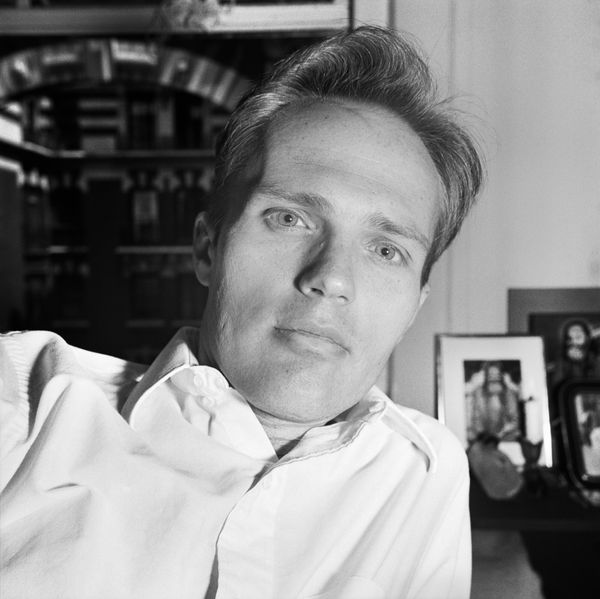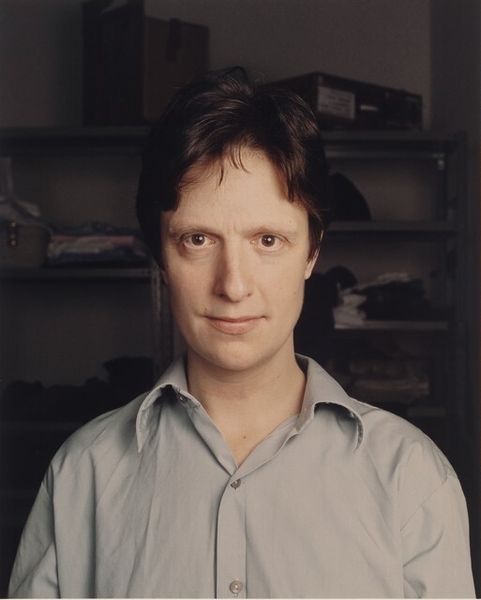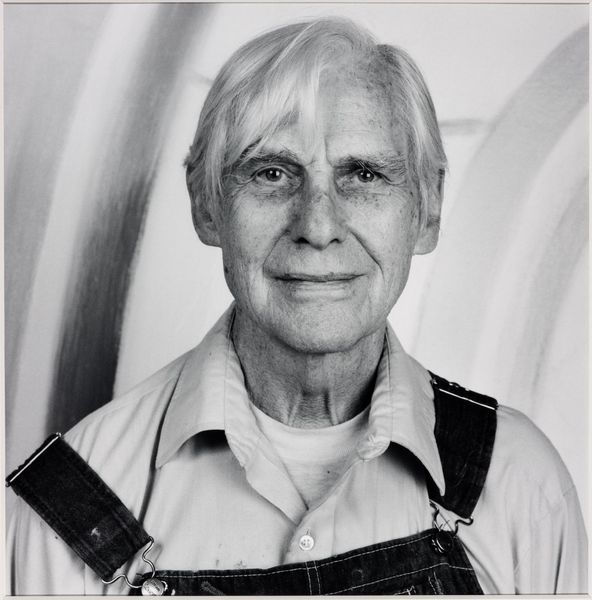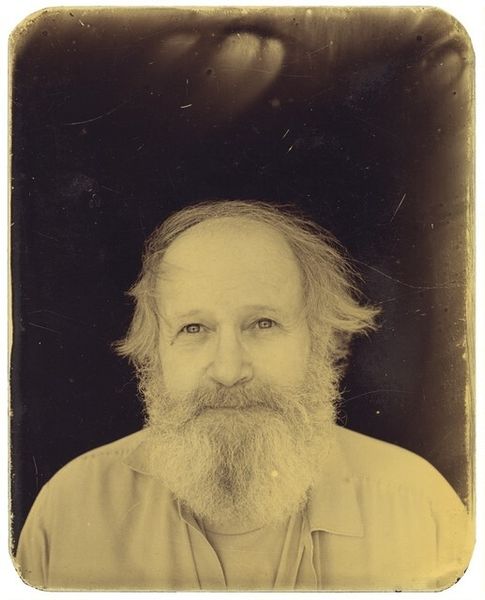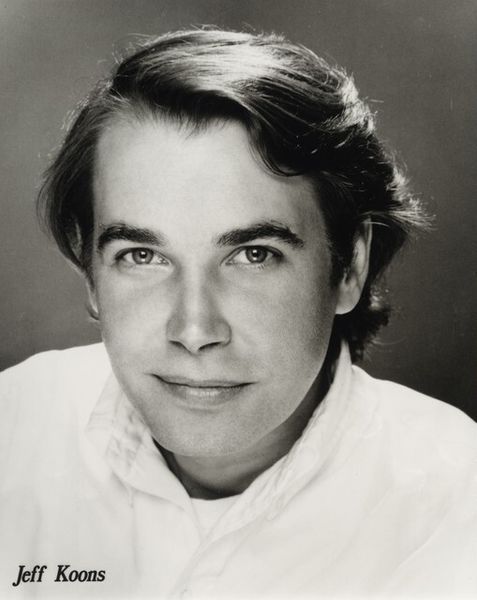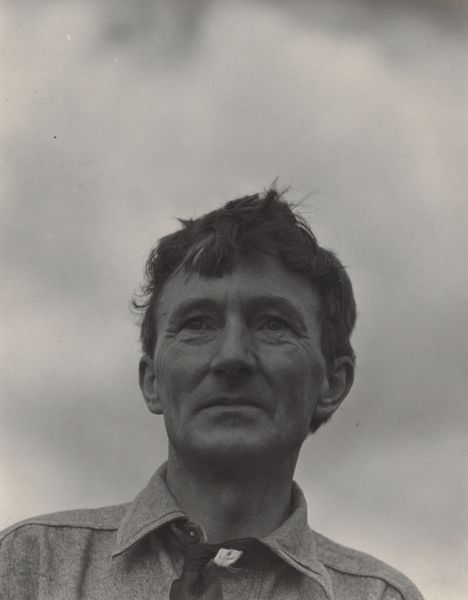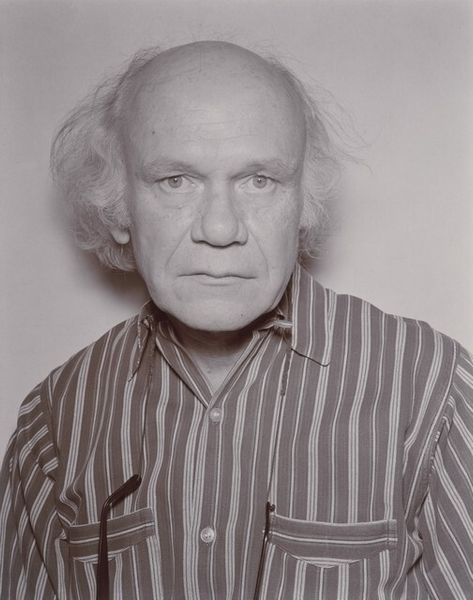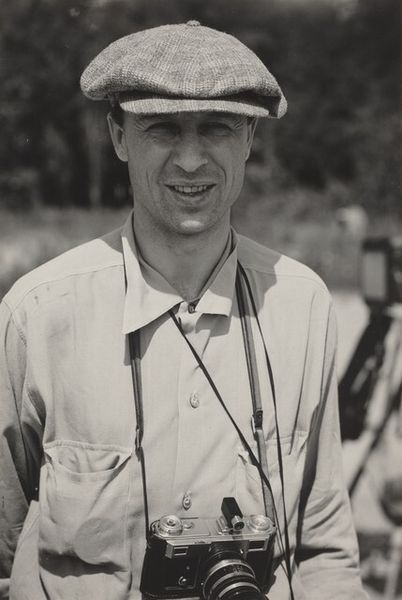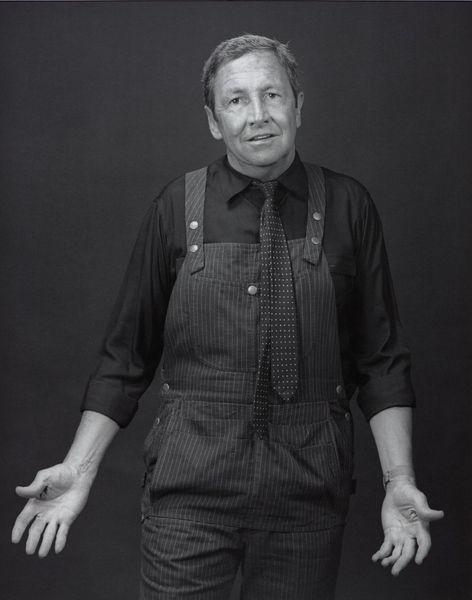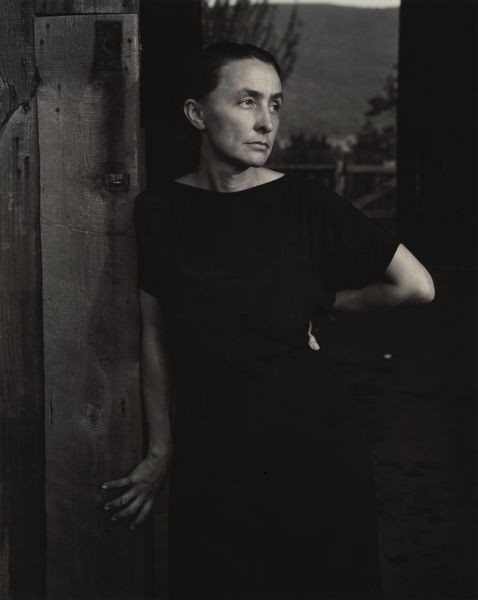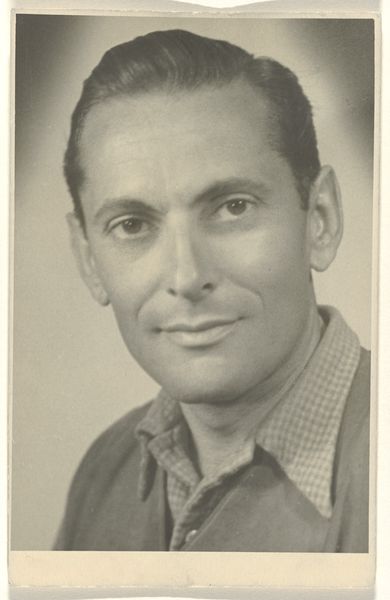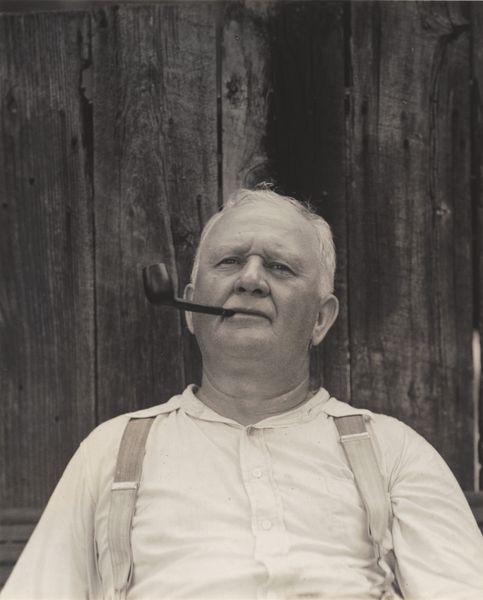
photography
#
portrait
#
self-portrait
#
portrait
#
photography
#
realism
Dimensions: image: 16.1 × 9.8 cm (6 5/16 × 3 7/8 in.) sheet: 35.4 × 27.7 cm (13 15/16 × 10 7/8 in.)
Copyright: National Gallery of Art: CC0 1.0
Editor: Let's discuss Robert Adams's black and white photograph "Self-portrait" from 1993. It strikes me as very understated. The composition is simple, a straightforward head and shoulders shot. How do you interpret this work, considering its context? Curator: Well, first, consider the historical backdrop of the 1990s. There's a growing conversation about environmentalism and corporate power structures, a period marked by anxieties and resistance. In light of this, Adams, known for his documentation of the American West, uses the self-portrait as a tool to reflect on his own position within those complex dynamics. Look at the way he presents himself. Is there any performativity of his masculinity, or any assertion of status? Editor: No, not really. He seems intentionally ordinary. He is wearing a simple work shirt, nothing fancy or particularly expressive. It reads very casually, as if trying to take an "anti-portait" portrait, an anonymous and genuine take on identity. Curator: Precisely. Now, think about how traditional portraiture historically functioned to assert power, wealth, and status, primarily reinforcing social hierarchies. Adams seems to actively resist this. By portraying himself as an "everyman," isn't he critiquing these structures? Consider his environmental advocacy. Does this photograph align with his broader critique of American society’s impact on the natural world? How does a simple picture tie in such important philosophical subjects such as nature, power, and our collective future? Editor: That makes sense. His simple presentation can be seen as an effort to break down those hierarchies and engage more directly with the reality of ordinary life and what affects everyone. Curator: Yes, it’s an important reminder that even a self-portrait can be a site of resistance. It’s a subtle act, but profoundly significant. Editor: I see now; the quietness speaks volumes! It really gives new weight to understanding the social intent in artistic depictions. Curator: Exactly. Art's strength is exactly that: turning private statements into loud social interventions.
Comments
No comments
Be the first to comment and join the conversation on the ultimate creative platform.
